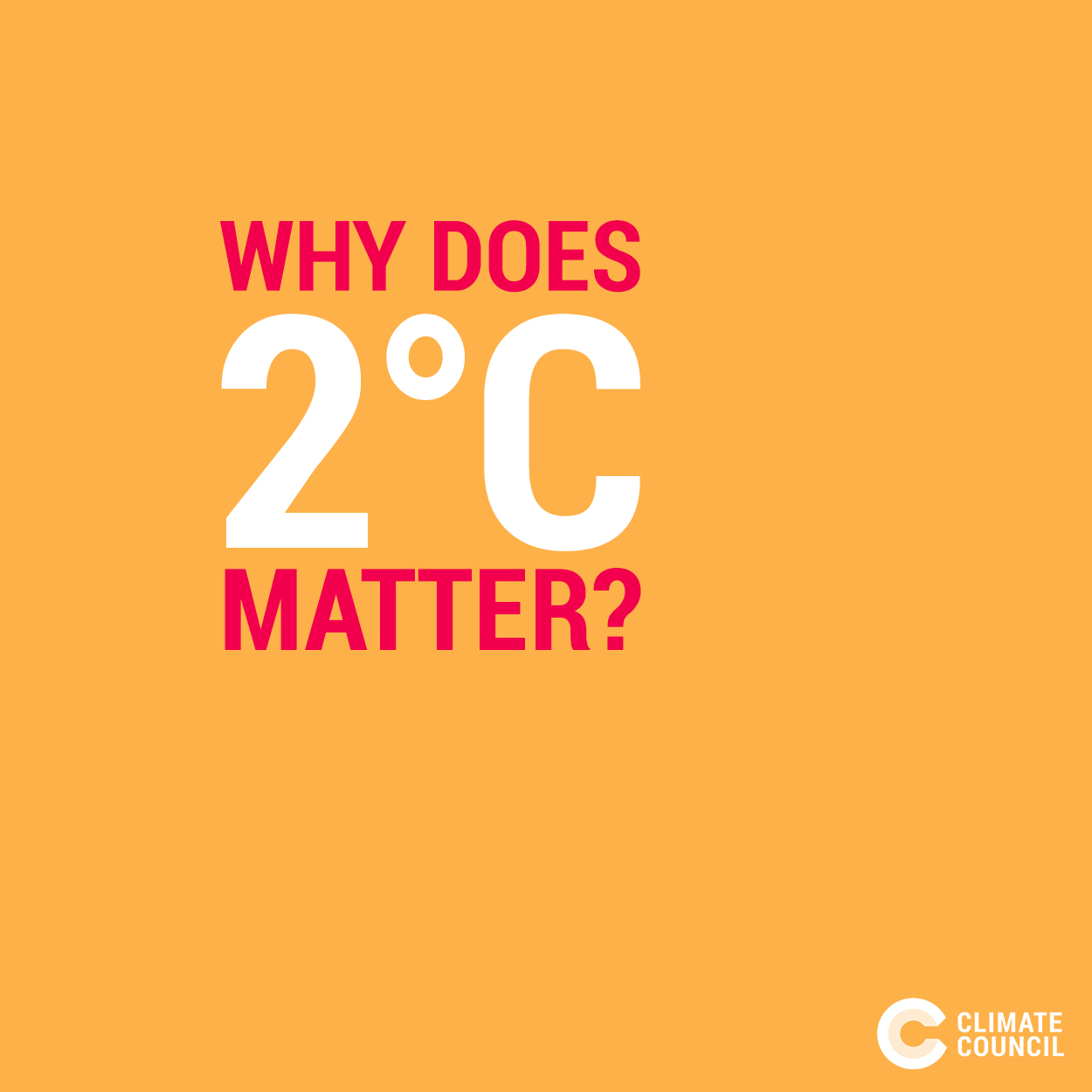
This little number gets talked about a lot, but why?
Well, in 2010 Governments around the world agreed to keep global temperature rise to no more than 2°C above pre-industrial levels. While it may not sound like much, 2°C represents a very substantial change to the Earth System and will have serious impacts on the lives and livelihoods of people all over the world. Think hotter, longer and more frequent heatwaves, rising sea levels, increases in extreme bushfire weather, mass species extinctions and acidifying oceans.
In fact, the threshold to trigger the melting of the Greenland ice-sheet, which would eventually raise sea level by about seven metres, inundating major cities worldwide, lies between a 1°C and 4°C rise, with the risk increasing through that temperature range. Eeeek!!
To bring that a little closer to home, let’s look at what’s happening in Australia with just 0.9°C of warming: hot days have doubled in the last 50 years, while heatwaves have become hotter, last longer and occur more often. Over the last 35 years, extreme fire weather has increased in Southeastern Australia.
Our neighbours in the Pacific will tell you that a 2°C rise in global temperature is too high for them – they’ve been arguing to limit global temperature rise to 1.5°C to protect their nations from rising seas. However, while 2°C target may be too high, it was hard-won over decades of international negotiations.
So that little number? It’s kind of a big deal.